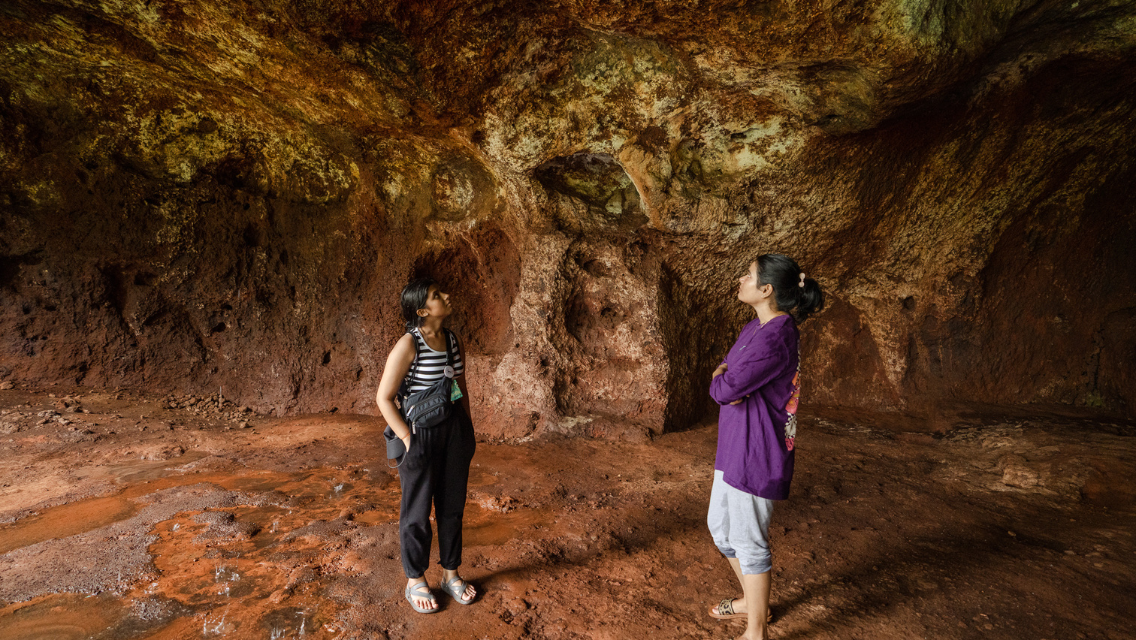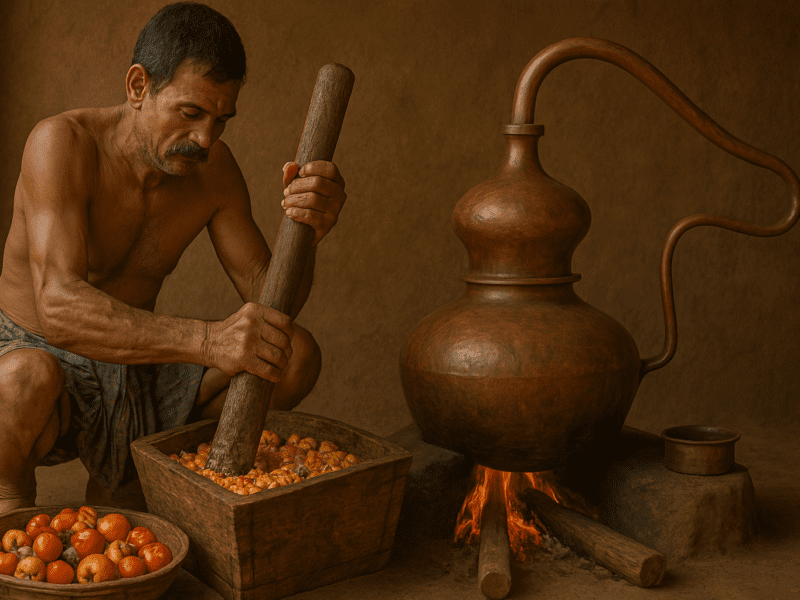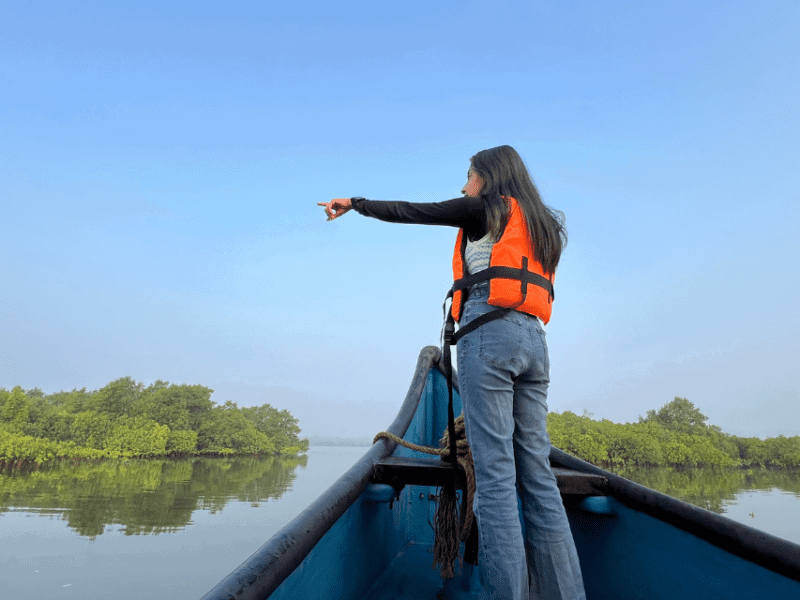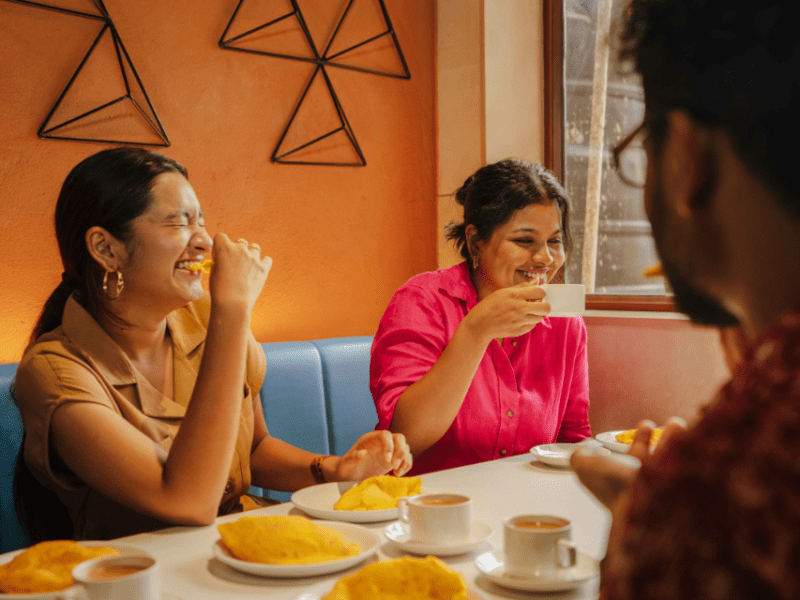Discovering Goa Hinterlands: A Journey Beyond the Beaches
One immediately paints a visual picture of beaches, party-nights and shacks serving delicious seafood and drinks! But let me take you on through a journey that is way different from the typical tourist’s trail. This is my journey of how I explored the hinterlands of Goa, unveiling its hidden treasures and embracing its soul through its lush forests, ancient temples, caves, cascading waterfalls, and serene villages. I discovered a side of this paradise while traveling from North Goa to South Goa, that is often overshadowed by its world-famous coastline.
Salim Ali Bird Sanctuary: A Feathered Finale
My adventure began in North Goa at the Salim Ali Bird Sanctuary, a haven for bird lovers and one of the best hinterland of Goa. Named after India’s famous ornithologist, this sanctuary is spread across the island of Chorao and offers a unique mangrove-based ecosystem. I hired a canoe and ventured into the winding waterways, spotting kingfishers, herons, and even a few rare migratory birds. The guide accompanying me was highly knowledgeable about the birds and their habitats which made the experience even more enriching. It was a peaceful way to start my journey, immersed in nature’s melodies.
Aldona, Siolim, and Divar Island: Goa’s Hinterland Villages
Stepping into Goa’s hinterland villages felt like something straight out of a storybook. The quiet and tranquil village of Aldona had lush fields and charming bridges. I visited the St. Thomas Church, a beautiful structure overlooking the Mapusa River. The local markets in Aldona were bustling with activity, showcasing handicrafts and fresh produce.
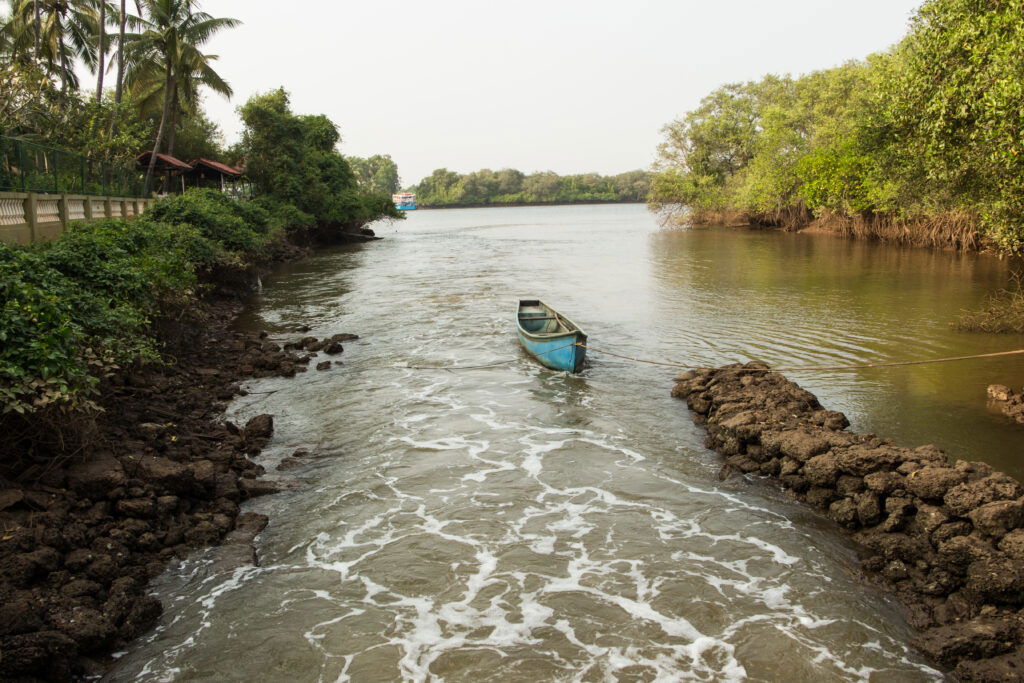
Siolim was known for its traditional Portuguese homes. I walked through its narrow lanes, discovering vibrant murals and meeting friendly locals. They shared tales of their festive traditions. Siolim hosts the Feast of St. Anthony coming alive with music and processions that reflect its vibrant culture.
Divar Island was the crown jewel – accessible by ferry, this island felt untouched by time. I explored its hidden chapels and enjoyed a picnic by the riverbank.
The Mhadei River: White Water Rafting Adventure
Next, I headed to the Mhadei River for my dose of adrenaline! White water rafting here is an exhilarating experience, with rapids ranging from mild to wild. My guide ensured our safety while narrating stories about the river’s significance to local communities.
Mhadei Wildlife Sanctuary: A Biodiversity Hotspot
Another sanctuary worth visiting is Mhadei, a hotspot for birdwatchers. My guide here was a local birder. He helped me identify several species, including the Malabar trogon. The sanctuary’s dense foliage and serene atmosphere made it a perfect spot to connect with nature. Mhadei is also home to rare medicinal plants that locals believe hold ancient healing powers.
Devil’s Canyon: An Enigmatic Gorge
A short distance from Mhadei is the mysterious Devil’s Canyon. I was curious to see it and learn why it’s called so! The deep gorge carved by the Khandepar River is stunning but scary. Elderly locals warn that spirits guard this place, and its swirling waters make it unsuitable for swimming.
As I ventured further along the canyon’s edge, the panoramic views left me breathless. It felt like a natural amphitheater, designed for those who appreciate the dramatic interplay of rock and water. For thrill-seekers, this is an offbeat spot to visit with less crowds to allow you to spend time peacefully.
Mollem National Park: A Wilderness Retreat
This was the next destination in my itinerary. Mollem National Park is an extension of the Bhagwan Mahavir Wildlife Sanctuary. The dense forest here is home to several species of flora and fauna, including elusive creatures like the leopard and the slender loris. I took a jeep safari, guided by a local naturalist who pointed out birds and butterflies. If not for him, I would have never noticed this beauty.
Mollem is also the starting point for a trek to Tambdi Surla, a hidden gem I was to explore next. The air here was filled with the scent of wildflowers, and the trails felt like gateways to another world.
Tambdi Surla Temple: A Portal to the Past
The Tambdi Surla Temple was a contrast to the natural wonders I had explored. This 12th-century Shiva temple is a masterpiece of Kadamba architecture made of basalt. Surrounded by dense forests, the temple’s intricate carvings tell stories of Hindu mythology.
The place was so devotionally peaceful. I spent hours admiring its craftsmanship, speaking to a local priest who shared tales of its resilience against invasions and nature’s fury. The temple is still in active worship, and during Mahashivratri, devotees gather in large numbers, adding a spiritual fervor to its timeless appeal. The trek back from the temple was equally enchanting, along the streams with the soothing sounds of birds chirping all throughout.
Dudhsagar Falls: Nature’s Majestic Canvas
Next, I visited the very popular hinterland – the awe-inspiring Dudhsagar Falls, one of the tallest waterfalls in India. Amidst the Western Ghats, this four-tiered cascade lives up to its name, which means “Sea of Milk”. As I trekked through the Bhagwan Mahavir Wildlife Sanctuary to reach the falls, the sound of roaring water became louder, building my anticipation.
Dudhsagar is a haven for photographers and nature lovers. I joined a group for the trek and was rewarded with mesmerizing views and a refreshing dip in the pool below the falls.
Sahakari Spice Farm: A Whiff of Goa’s Spice Legacy
Continuing my journey, I visited Sahakari Spice Farm in Ponda. I was greeted with a garland and a cup of spiced tea. The guided tour through the plantation introduced me to a variety of spices – cinnamon, cardamom, nutmeg – and their culinary and medicinal uses.
An authentic Goan spread of food was served on banana leaves at lunch – complete with fish curry and kokum juice. This was more than a meal; it was a cultural experience, not to be missed, that connected me to Goa’s agricultural heritage.
Pascoal Spice Village: A Rustic Escape
Not far from Sahakari, the Pascoal Spice Village offered a more rustic vibe. I learned how spices are grown organically and even tried my hand at harvesting pepper. It is an amazing activity for people like me that stay in the urban parts. The hosts were incredibly warm, sharing anecdotes of how their families have preserved traditional farming methods.
Shri Shantadurga and Shri Manguesh Temples: Goa’s Spiritual Heart
Goa’s hinterlands are dotted with ancient temples. The Shri Shantadurga Temple in Kavlem, dedicated to the goddess of peace, is a stunning blend of architecture and spirituality. Its vibrant colors and beautiful surroundings left me in awe. During Navratri, the temple becomes a hub of festivities, with devotees offering prayers and participating in cultural programs.
The Shri Manguesh Temple in Priol is equally enchanting, with its white tower and sacred pond. Both temples are central to Goa’s cultural fabric, hosting festivals that draw devotees from far and wide.
Netravali Wildlife Sanctuary: Trekking Bliss
Netravali Wildlife Sanctuary is a trekker’s paradise. Its lush forests and bubbling streams made for an unforgettable hike. The highlight was spotting the rare Netravali bubble pond, where the water seemed to dance. This sanctuary is also home to unique fauna, and I was lucky to spot a giant squirrel.
Zambaulim Temple and Kushavati River: Serenity Unleashed
The Zambaulim Temple, dedicated to Lord Damodar, is a lesser-known gem. Its peaceful ambiance was a welcome respite after my adventures. Nearby, the Kushavati River beckoned with its clear waters. Taking a dip here was the perfect way to recharge.
Kulagar Visit: An Agrarian Experience
At a kulagar (a traditional Goan orchard), I got a glimpse of sustainable farming. Cashew and coconut trees swayed in the breeze as the farmer explained their importance in Goan culture. I even tried feni, the local cashew liquor, under the shade of a tree.
Rivona Buddhist Cave and Rock Carvings: A Step Back in Time
Exploring the Rivona Buddhist Cave was like stepping back into an ancient era. These rock-cut caves, believed to have been meditation spots for Buddhist monks, exude a mystical charm. The rock carvings of Usgalimal full of prehistoric etchings nearby are truly fascinating.
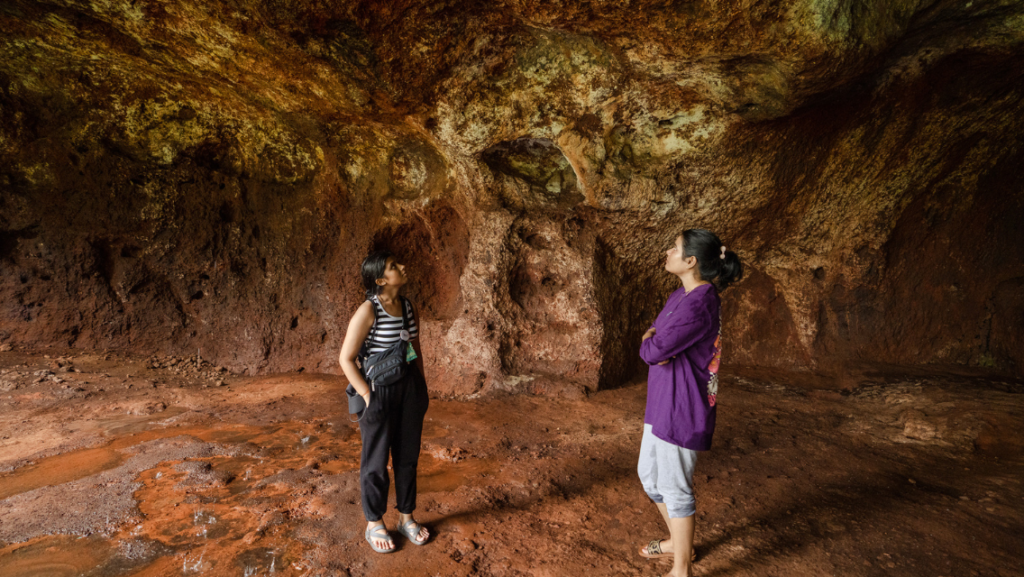
Goa’s hinterlands are a treasure trove of experiences, offering everything from natural beauty and adventure to cultural richness and spiritual solace. This journey taught me that Goa is much more than its beaches; it’s a land of stories waiting to be discovered. So, the next time you plan a trip to Goa, venture beyond the usual. Trust me, the hinterlands will steal your heart.
